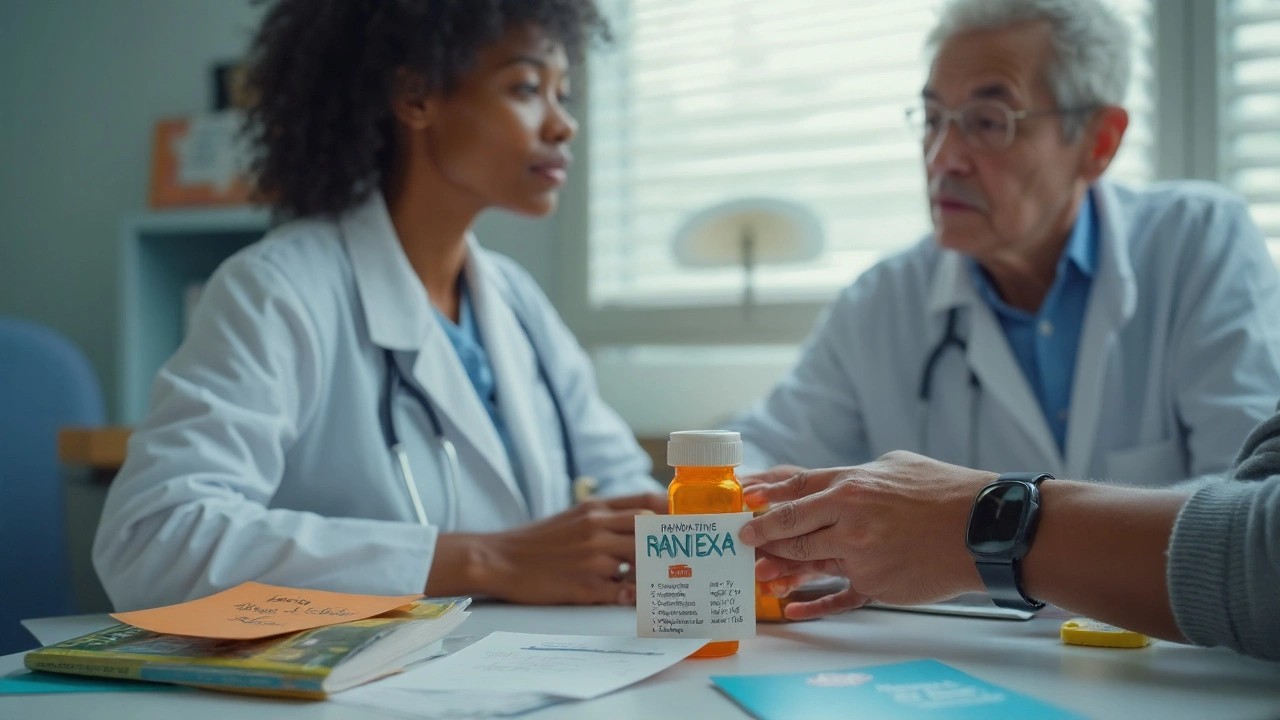Dosage Made Simple: Your Quick Guide to Safe Med Dosing
Ever wonder why the same pill can be a lifesaver at one dose and cause trouble at another? Getting the right amount of a medication or supplement is the biggest factor in making it work. This page pulls together the most useful pointers from our articles, so you can figure out doses without staring at a wall of medical jargon.
Why Getting the Right Dose Matters
First off, the purpose of a dose is to hit the sweet spot where the drug does what it’s supposed to do while keeping side effects low. Take Prasugrel, for example – the right amount helps prevent blood clots after a stent, but a higher dose can raise bleeding risk. The same goes for everyday supplements like blond psyllium; too little won’t ease constipation, too much can cause cramping.
Age, weight, kidney function, and other medicines you’re already taking also change the picture. A 70‑year‑old with reduced kidney clearance may need a lower dose of a painkiller than a healthy 30‑year‑old. Ignoring these factors often leads to unnecessary hospital visits, which is why many of our guides stress checking these details before you start.
Practical Tips for Getting Your Dose Right
1. Read the label, then read it again. The prescribed amount, frequency, and any special instructions (like taking with food) are right there. If anything looks unclear, ask a pharmacist – they’re trained to explain dosage in plain language.
2. Use the right measuring tool. A kitchen spoon isn’t a reliable dose for liquid meds or powders. Buy a dosing syringe or a proper measuring cup. For pills, a pill cutter can help split tablets accurately if a lower dose is needed.
3. Track your schedule. Missed doses or taking two doses too close together can throw off drug levels. Set alarms or use a simple pill box with compartments for morning, noon, and night.
4. Watch for interactions. Some drugs raise or lower the effect of others. Our article on AFib and depression points out that certain antidepressants can affect heart rhythm drugs, meaning you might need dose adjustments.
5. Adjust for special situations. Traveling across time zones, like the hypophosphatemia travel tips suggest, may require you to shift dosing times so you don’t double‑dose or skip a dose.
6. Know the warning signs. If you feel dizzy, have unusual bruising, or notice symptoms that don’t match what the medication should do, it could be a dose issue. Stop and contact a health professional.
7. Don’t self‑medicate with online purchases. Buying drugs like Clomid or Indocin online can be risky if the source isn’t verified. Wrong dosage forms or counterfeit pills are real threats, which is why the guides on safe online buying stress checking pharmacy credentials first.
Remember, this page is for educational purposes only. Always confirm your dose with a qualified clinician before making changes. By following these steps, you’ll reduce the chance of errors and get the most out of your medication or supplement.
Got a specific drug you’re unsure about? Check our detailed dosage articles—like the Prasugrel guide—for exact numbers, side‑effect warnings, and alternatives. Stay safe, stay informed, and let the right dose work for you.
Bromhexine: How It Works, Dosage, Benefits & Risks Explained
- Benjamin Aghaki-Allen
- Health
- 11 comment
A clear, up‑to‑date guide on bromhexine - its action, correct dosage, benefits for cough relief, and safety considerations you need to know.
VIEW MORERanexa (Ranolazine) 2025 Guide: Uses, Dosage, Side Effects, Interactions, and Alternatives
- Benjamin Aghaki-Allen
- Health
- 7 comment
Clear 2025 guide to Ranexa (ranolazine): what it treats, how to take it, side effects, interactions, who should avoid it, and safe alternatives, with practical tips.
VIEW MORECategories
Popular posts
-
TENS Therapy for Pain Relief: How Transcutaneous Electrical Nerve Stimulation Works and When It Helps
Benjamin Aghaki-Allen -
Vitamin D Deficiency and Its Impact on Inflammatory Bowel Disease
Benjamin Aghaki-Allen -
Music Therapy for Relapsing‑Remitting Disease: Evidence, How-To, and 2025 Care Tips
Benjamin Aghaki-Allen -
Antibiotic & Birth Control Pill Interactions: Proven Facts
Benjamin Aghaki-Allen -
Allergies & Oral Health: Key Facts You Must Know
Benjamin Aghaki-Allen
Popular tags
- side effects
- online pharmacy
- medication safety
- dietary supplement
- gut health
- blood pressure medication
- alternatives
- generic drugs
- dosage
- weight management
- quality of life
- cheap generic Zoloft
- affordable sertraline
- ED medication comparison
- Tadalafil
- comparison
- medication adherence
- therapeutic equivalence
- Hatch-Waxman Act
- generic vs brand

